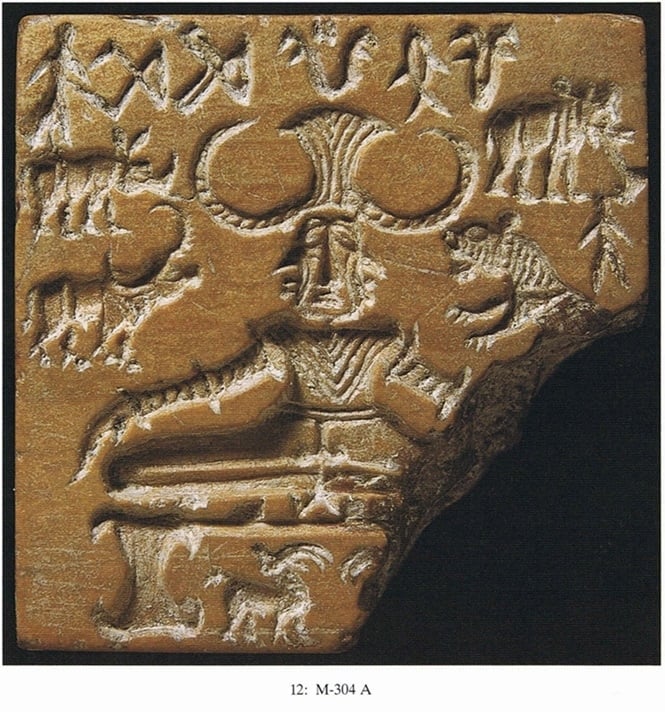
Tracing the Thread of Tantra
The word “Tantra” originates from the Sanskrit word for “weaving”. The concept of “sutra” is also associated with Tantra, and it signifies the act of combining and integrating ideas into a cohesive whole. Tantra’s reputation for appropriation has fostered its democratic nature and ensured its survival for centuries. The ancient text from the late Bronze Age, the Rigveda, mentions the concept of looming. As the term suggests, Tantra has both changed and developed as a progressive idea since then. Two main shamanic archetypes influence the current understanding of Tantra. The first example is a metaphorical portrayal of Shiva and his wife, Parvati, in a fused state of sexual bliss. The second example focuses on the thematic relationship between skulls and confronting death, suggesting that facing this eventual limitation leads to deeper self-discovery and a sense of renewal.

Fig 1. Chausath Yogini Shrine

Fig 2. Pasuphati lord of animal

Fig 3. Islamabad Seal Pashupati
Shiva the Shaman
One recurring theme in all prehistoric artistic expressions is controlling the animal. The artistic depictions from the Indus Valley featured human figures adorned with horns. The symbol merged with the abundant power of cattle, associating these animals with creating a civilized state. Early Indus Valley images from the second century document Pashupati, a shamanic deity associated to animals with a three-faced form. This understanding of the animal as a symbol allows us to see how it reflects Rudra (later personified as Shiva), the hunter and storm god’s own heroic inner journey of selfreflection. Animistic tribes had poetic views of gods as multifaceted actors before organized religions formed. The authenticity of the Shiva personality is further emphasized by other examples, such as the detailed craftsmanship rendering Lakulisha known as the lord of the stick. The Gudimallam Lingam from a village near Tirupati city in India shows a penis with prominent relief features of Shiva standing atop Apasmara, a dwarfish figure whose name implies “loss of consciousness.” These artistic representations of Shiva act as an enduring reminder of the intrinsic connection between sexuality, birth, and death.

Fig 4. Lakulisha

Fig 5. Gudimallam Lingam from a village near Tirupati city India. Photo credit 2007 eGway
Skull Men
While the earliest evidence of a skull cult dates back to Göbekli Tepe, the Kāpālika tradition, which also involved skulls, originated in Medieval India around the 4th century. The Kāpālikas stand resist traditional beliefs and practices. Brahmanism views them as murderers of god. Known for carryin skulls, the Kāpālikas were a group of Shaivite ascetics dedicated to Shiva, who used a human skull as a begging bowl. Imitating the haunting archetype of Bhairava (an aspect of Shiva), the Shaivite ascetics carry the skull trident, called the khaṭvāṅga. “Bhasman” is another name for them because of their unusual practice of dwelling in cremation grounds and applying ashes to their bodies. Although the Kāpālika tradition has declined, its practices persist in groups like the Aghorīs. Through their practices, Aghoris strive to dissolve the perceived boundaries between purity and impurity, seeing both as important elements of the human experience.

Fig 6. Chausath Yogini Temple. Photo Credit Suyash Dwivedi
In the extended Premium version of the article you can explore the story behind the Yogini shrines, the book Tantrāloka by the polymath Abhinavagupta, that stands out as a comprehensive commentary on the philosophical system of Kashmir Shaivism, and the magic triangle.
Click HERE for Vajrayogini’s sexual imagery in Tantric Buddhist art











